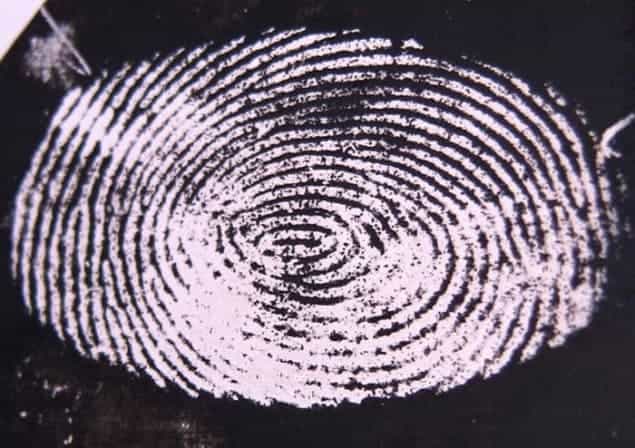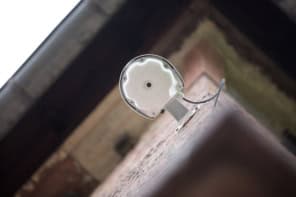
Researchers in the UK and France have developed a new and extremely sensitive method for visualizing fingerprints left on metal surfaces such as guns, knives and bullet casings. The technique utilizes colour-changing fluorescent films and the team says that it can be used to complement existing forensic processes.
The chance that two people will have identical fingerprints is about 64 billion to 1, which is why law-enforcement agencies rely on fingerprint evidence. Despite advances in detection since the 19th century, only about 10% of crime-scene fingerprint images are of sufficient quality to lead to the unambiguous identification of an individual that is good enough to satisfy a court.
Fingerprints are essentially deposits of sweat and natural oils. Traditional visualization techniques involve applying a coloured powder, chemical or biological reagent that adheres to or interacts with the residue and creates a visual contrast to the underlying surface. A major limitation of the technique is that these deposits can degrade with time or exposure to water or other materials.
Bare metal
Instead of focusing on the residue itself, Robert Hillman and colleagues at the University of Leicester, the Institut Laue-Langevin (ILL) and ISIS at the Rutherford Appleton Laboratory have decided to work with the bare surface between the ridges of a fingerprint. “Think of the deposits on the surface to be like little ‘hills’, we’ve decided to go for the bare metal at the bottom of the ‘valleys’,” explains Hillman.
Recently, the team has been experimenting with an electrochromic polymer that changes colour when an electrical voltage is applied. “We used electrochemistry to deposit a polymer from a monomer solution and subsequently we replaced the monomer deposition solution with a background electrolyte,” explains Hillman. The invisible residue left by a human finger does not conduct electricity, so it acts like a stencil. When the polymer is deposited on a fingerprint and the voltage is applied, the sticky deposit blocks the current, directing the film to the “valleys” in between the “hills”. The voltage changes the film’s colour, optimizing the visual contrast and essentially creating a negative image of the print.
Now, the researchers have taken their technique one step further by adding fluorescent molecules (fluorophores), which cause the film to emit light of a certain colour when exposed to ultraviolet light. This approach broadens the colour palette of the polymer films, says Hillman, and also allows more control in terms of tuning the colouration to get the best possible contrast with the underlying metal surface.
Neutron reflectivity
For the technique to work, the fluorophores must completely permeate the film without reaching the underlying metal surface, where their fluorescence deteriorates. To ensure that this happens, the researchers at the ILL and ISIS used a technique called neutron reflectively. This involves firing a neutron beam at the film and measuring the reflected neutrons. Neutron scattering can be sensitive to the specific isotopes present in the sample. To take advantage of this, selected parts of the system were labelled using the hydrogen isotope deuterium and the measurements were used to determine the ideal conditions for the introduction of the fluorophores.
The researchers say that the fingerprinting method is extremely sensitive and only tiny amounts of the residue are required to make it work – much less than is typical for conventional approaches. It is also well suited for use in combination with existing approaches, which often involve using a succession of reagents to try to reveal a print. If conventional reagents fail to reveal the pattern, then the bare surface regions should still be free for polymer deposition, according to Hillman.
Despite the advantages, the new technique is limited because it only works on metal samples, says Paul Kelly of the UK’s Loughborough University, who was not involved in the study. “It is certainly not a catch-all solution to fingerprint issues,” he says. But he adds that “the further enhancements discussed in this latest phase of the work certainly bode well for maximizing the prowess of the technique with respect to items such as knives and cartridge casings”.
Kelly says that while scientists can develop new fingerprinting techniques, “in the end, though, it’s down to forensic practitioners to assess their utility and applicability”.



